
Key Points
- High Beta/Low Volatility Strengthens Further
- Discretionary/Staples Retakes Broken Support
- Copper/Gold Moves Back into the Range
- Small Caps vs. Large Caps Remain Interesting
- High Yield Continues to Improve vs. Treasuries
Key Themes and Relationships
High Beta vs Low Volatility
The High Beta to Low Volatility Ratio remains stuck between support and resistance but has moved above the declining 50-day moving average this week. The ratio remains below the declining 200-day moving average, leaving more work to be done before the case can be made that a larger shift to increased risk appetite is taking hold. The 14-day RSI is still below 60 in a bearish regime. However, the strength of the ratio over the past two weeks has caught our attention.
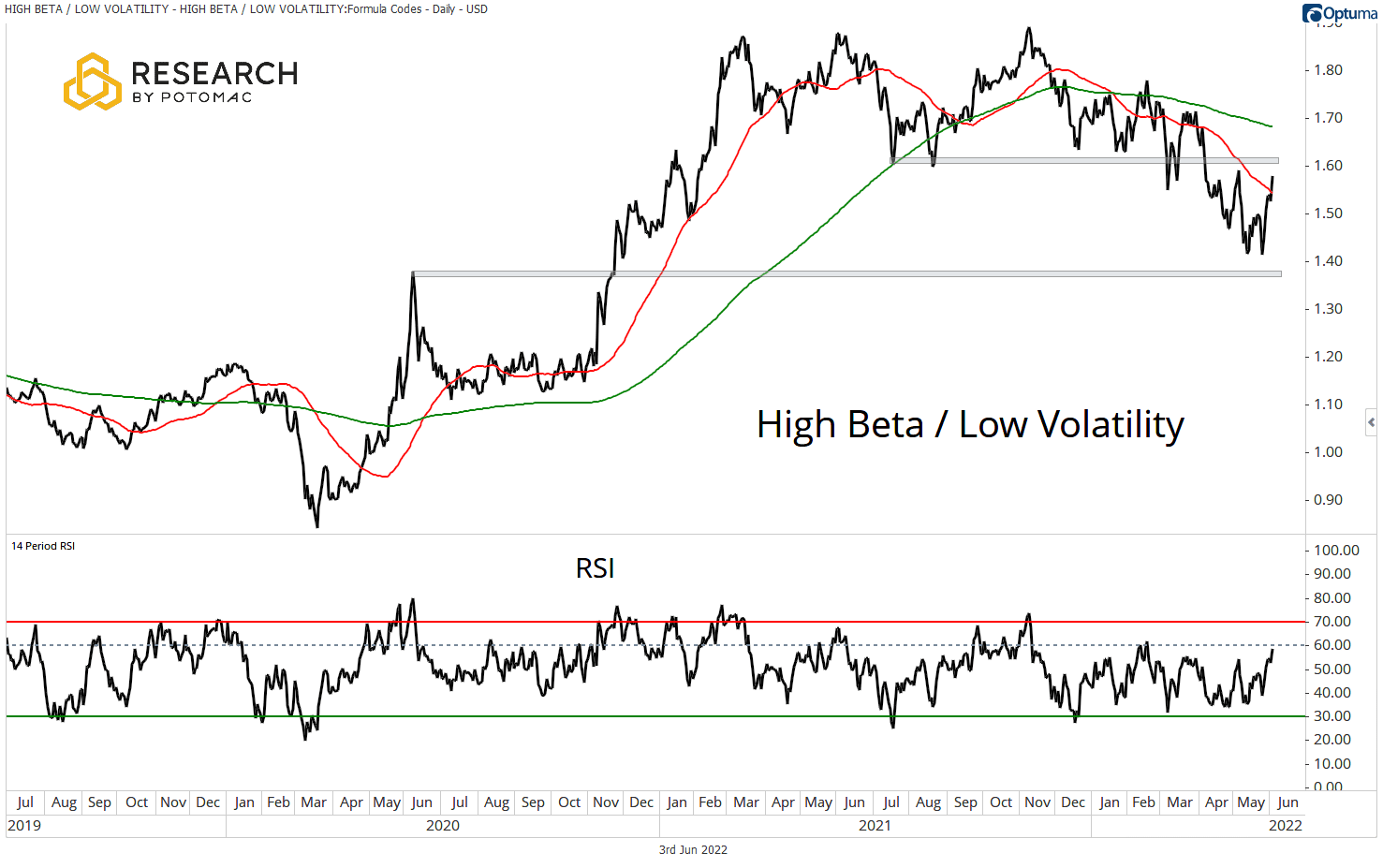
Consumer Discretionary vs Consumer Staples (Equal Weight)
The Discretionary/Staples ratio has moved above broken support but remains below the declining 50 and 200-day moving averages. The improvement over the past two weeks is certainly noteworthy, but the trend is still bearish, making lower lows and lower highs. At the same time, the 14-day RSI is holding in a bearish regime, unable to move above the 60 level.
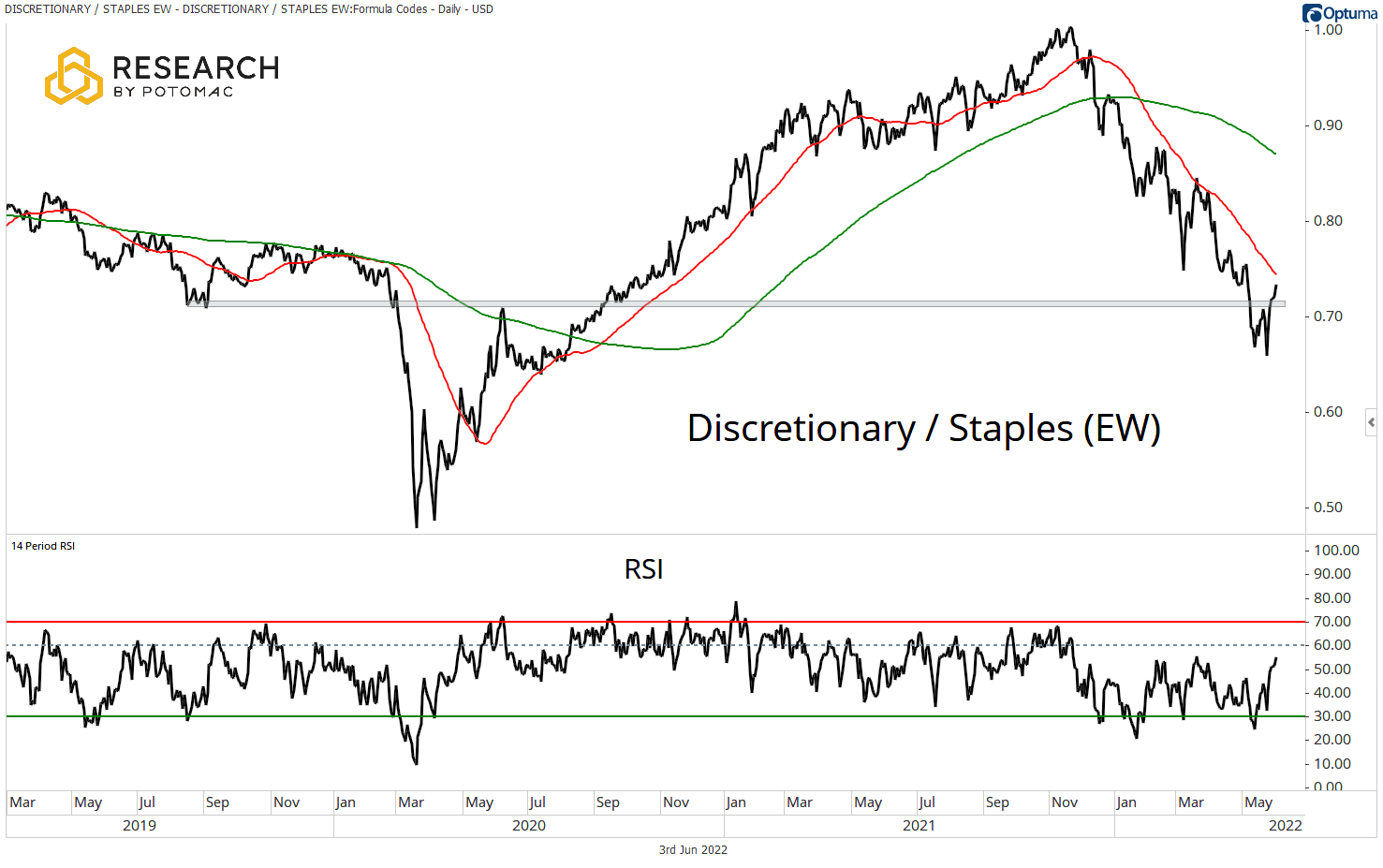
Lumber vs Gold
The Lumber/Gold ratio has seen bearish price action extended into a third week, with the ratio continuing to move lower from the 50 and 200-day moving averages with room to the 2021 lows. The 50-day is in the process of moving below the 200-day to leave a “death cross” on the chart. The bearish price action is confirmed by momentum as the 14-day RSI holds in an oversold position after making lower highs since December.
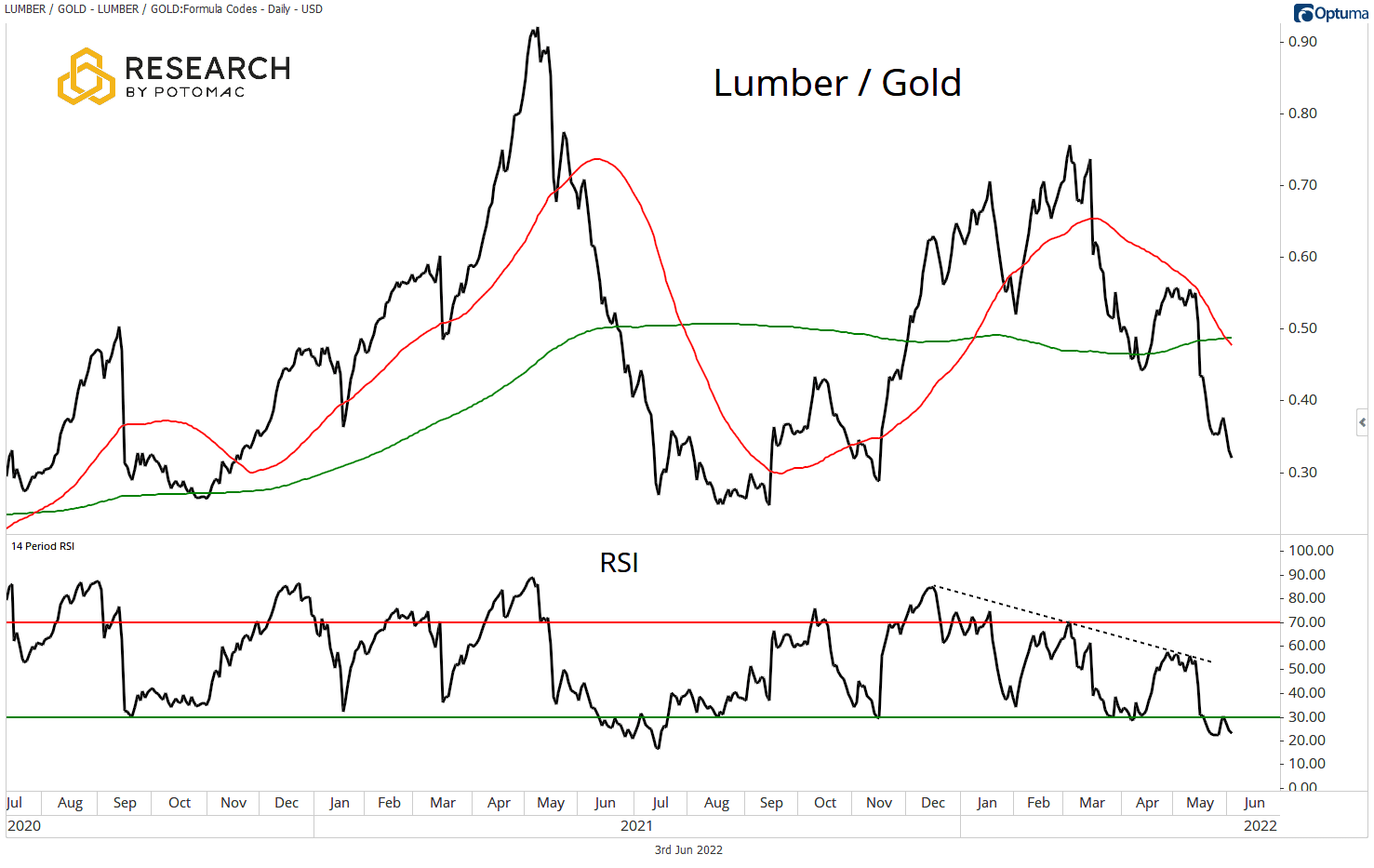
Copper vs Gold
The Copper/Gold ratio has moved above the 50 and 200-day moving averages after fighting to hold support at the bottom of the consolidation zone. While the rebound is impressive, it has only served to push the ratio back into the consolidation zone. However, the 14-day RSI has moved above 60, an attempt to break from the bearish regime and a change of character relative to its behavior in 2022. Noted.
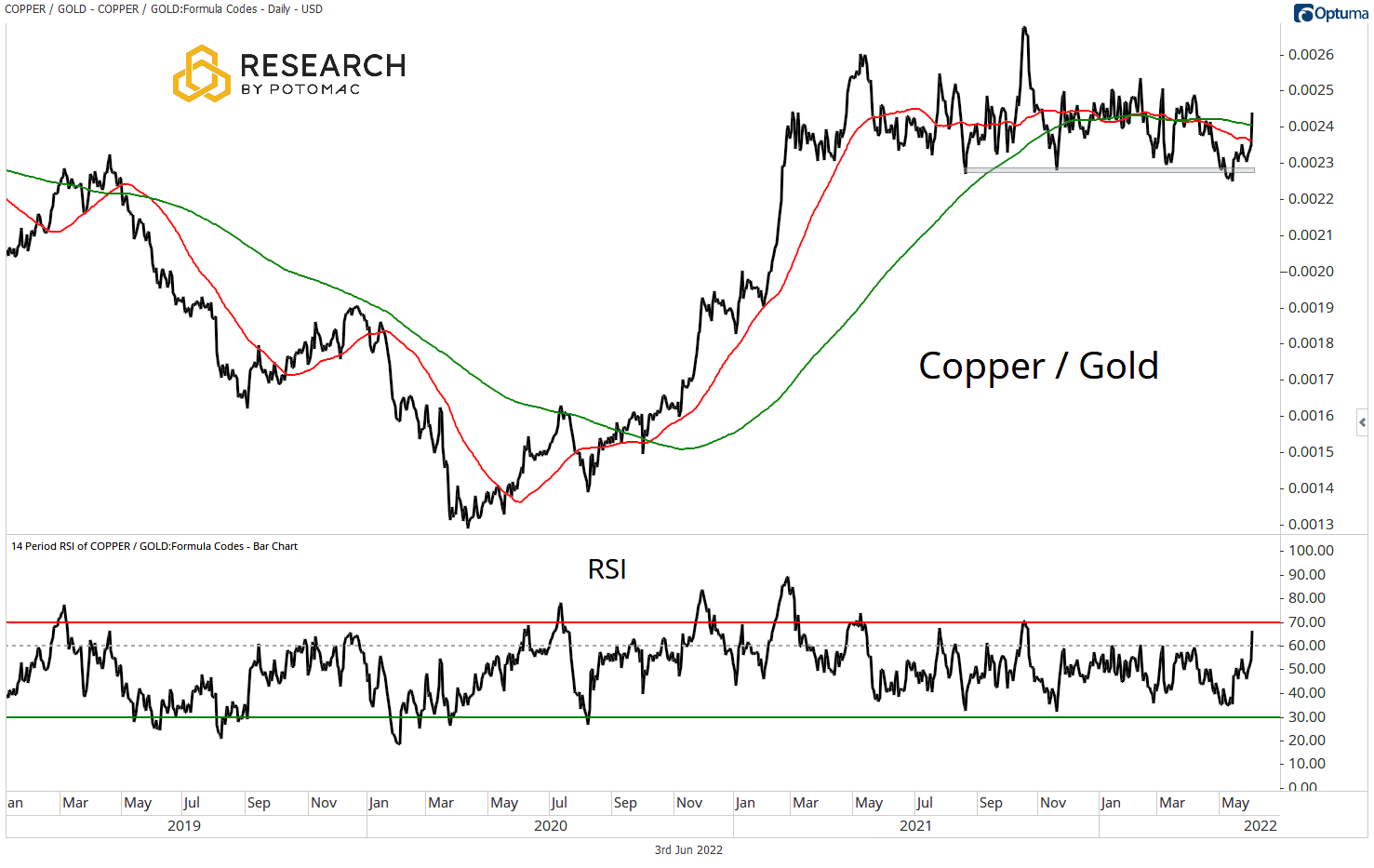
Small vs Large
For the Small Cap/Large Cap ratio, the theme of our note on May 13th still holds. The ratio is above the 50 and 200-day moving averages as it tries to reverse the bearish trend that began in March 2021. The 14-day RSI is holding near 60 and has not been oversold since July of last year. Breaking above resistance at the October/November highs could set the stage for further outperformance.
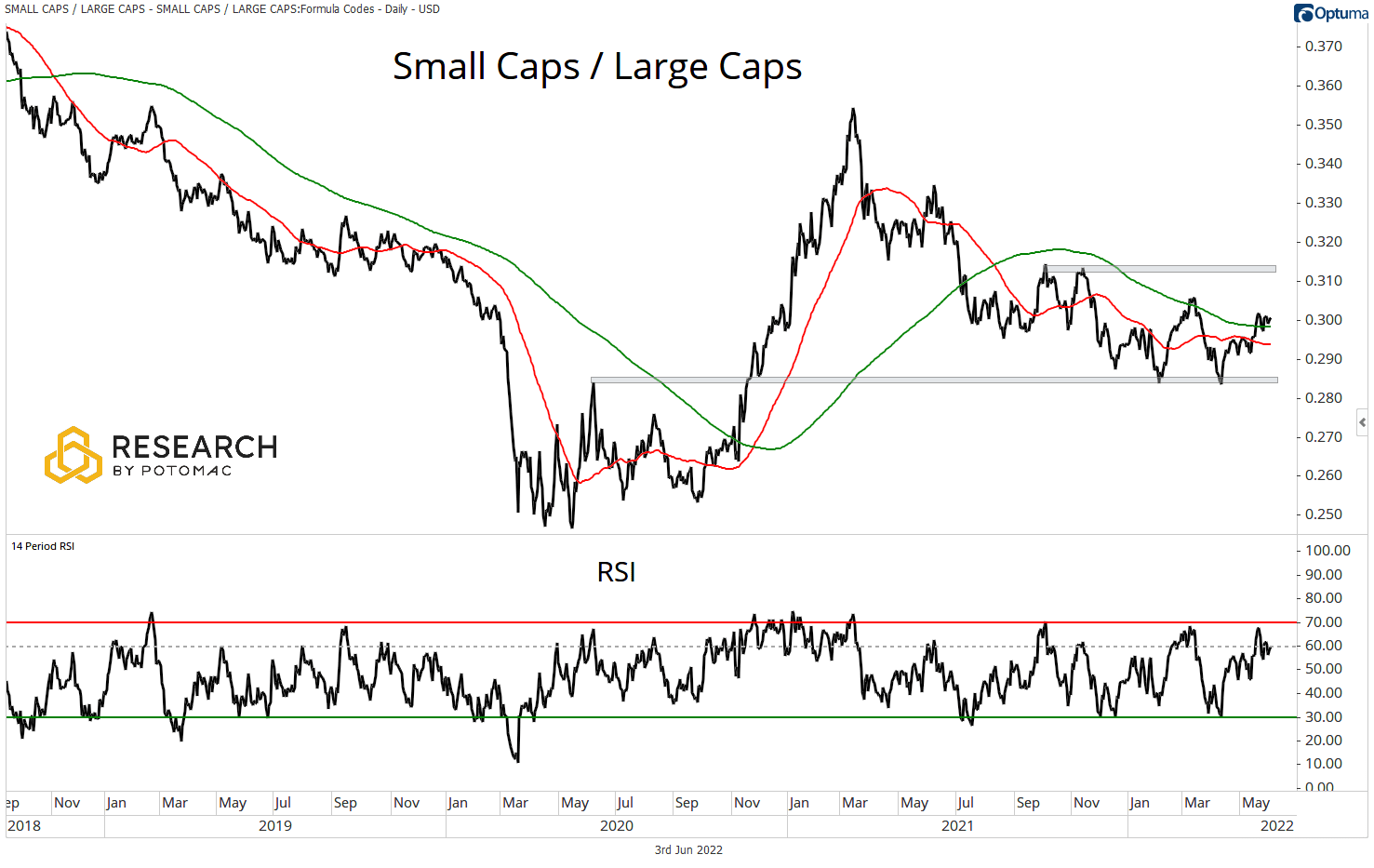
Growth vs Value
The Large Cap Growth vs. Large Cap Value theme has staged a rebound this week to reclaim broken support. The ratio remains well below the declining 50 and 200-day moving averages, keeping the trend in favor of Value. The 14-day RSI is moving higher but is still in a bearish regime.
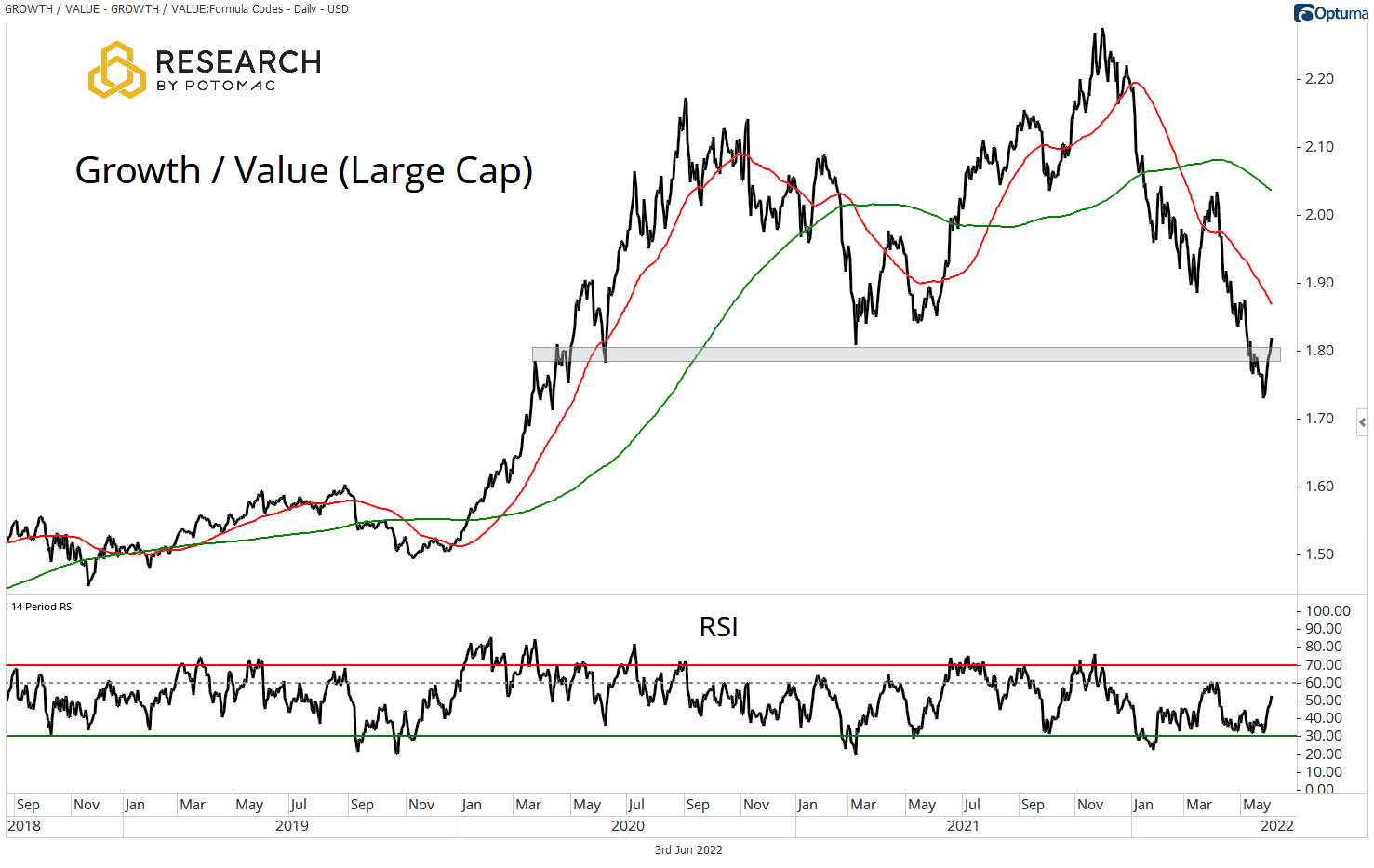
High Yield vs Treasuries
The relationship between High Yield Credit and Treasuries continued to improve this week, reclaiming broken support and the 50-day moving average. The next step in the healing process is to move above the 200-day moving average. The 14-day RSI is testing the 60 level as momentum tries to break from a bearish regime. This is a theme that should remain on the radar.
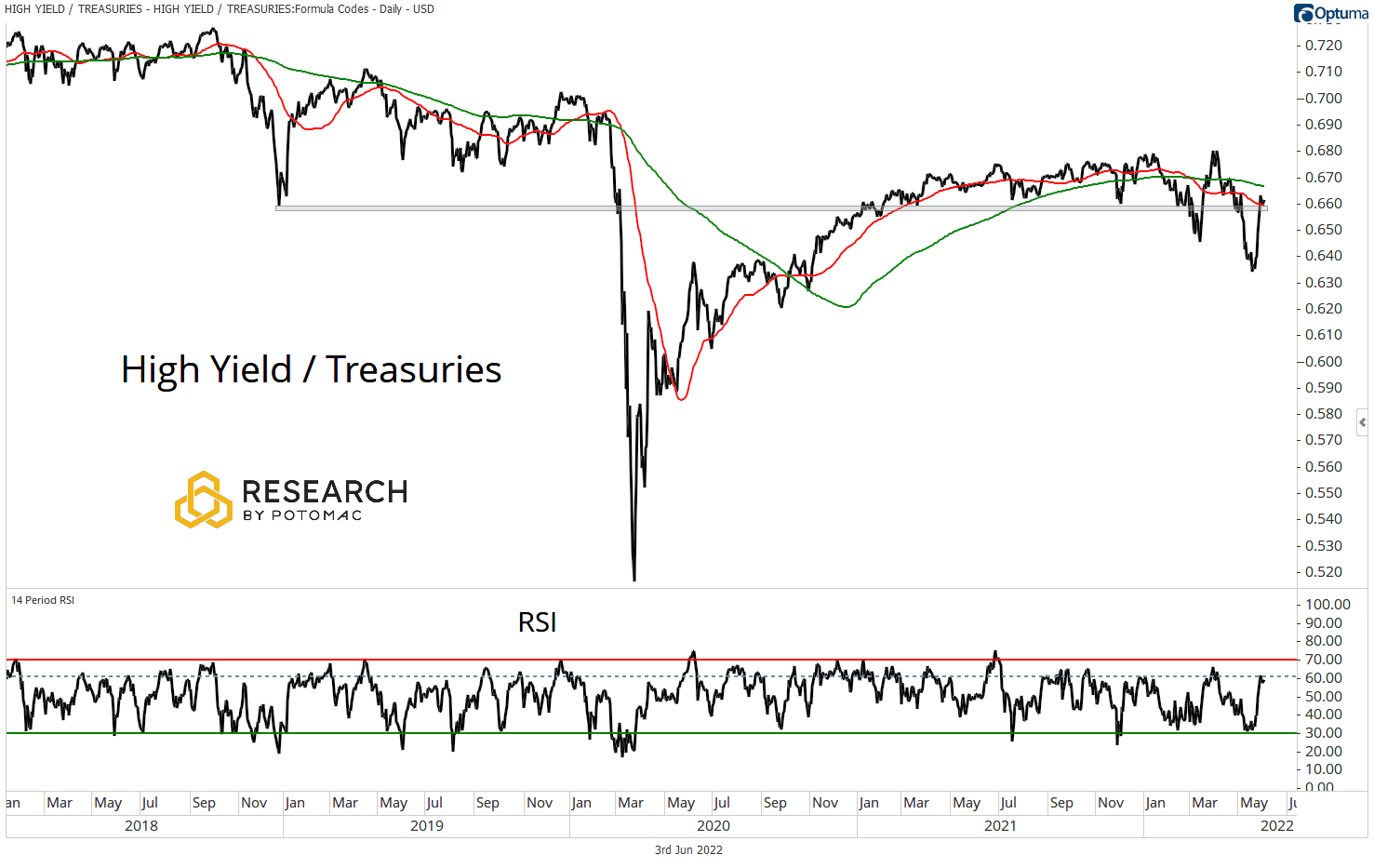
Take-Aways
The themes that we track in this note have mostly improved for a second consecutive week, an encouraging sign for risk appetite in the market. The question is are these counter-trend rallies or the start of something bigger? We will only know the answer with the passing of time, but we want to keep an open mind, especially when we view these improvements in conjunction with the better breadth dynamics that we highlighted in yesterday’s Daily Note. We continue to view the Small Cap/Large Cap relationship as the most interesting.
Disclosure: This information is prepared for general information only and should not be considered as individual investment advice nor as a solicitation to buy or offer to sell any securities. This material does not constitute any representation as to the suitability or appropriateness of any investment advisory program or security. Please visit our FULL DISCLOSURE page.
